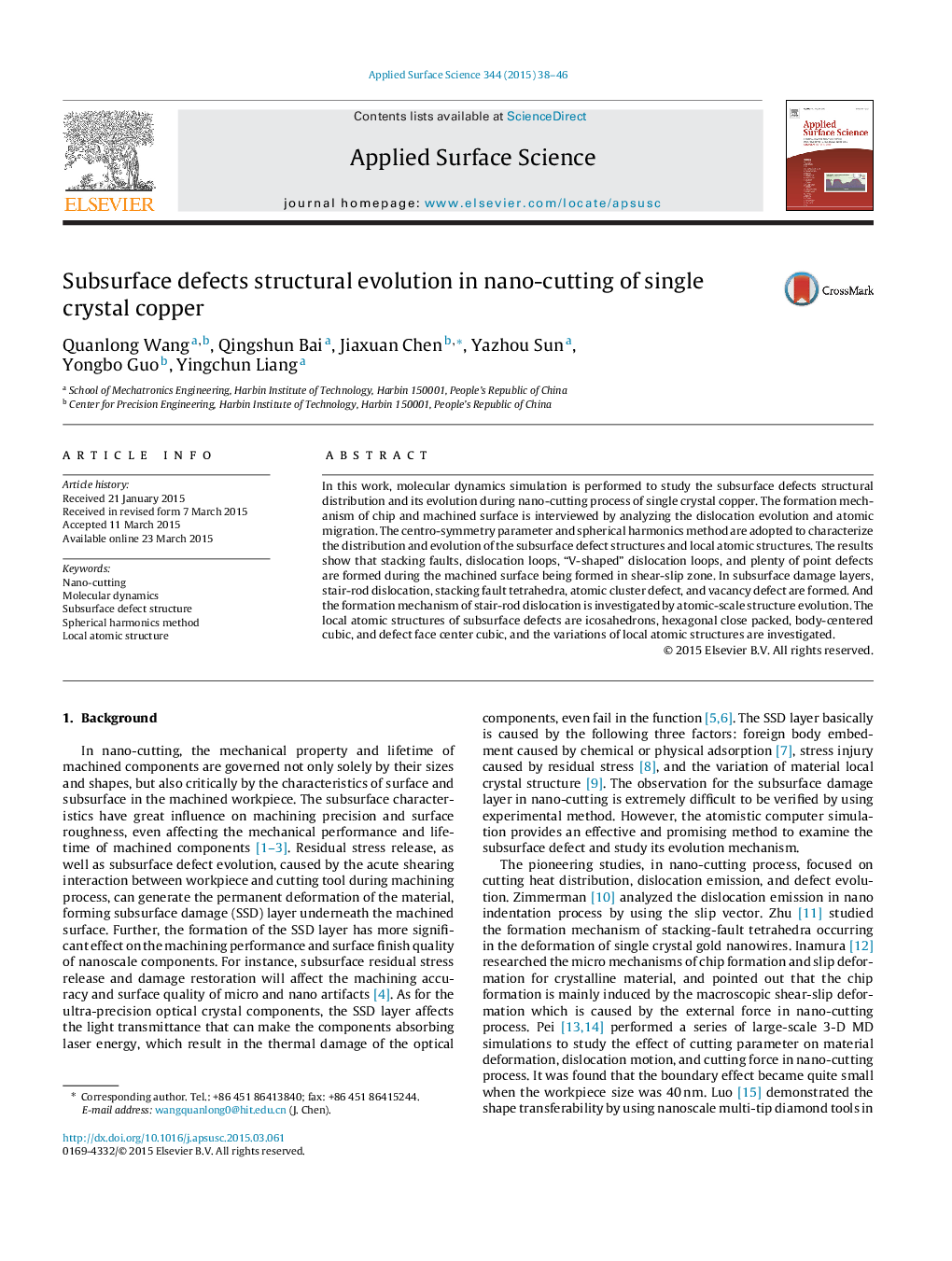| Article ID | Journal | Published Year | Pages | File Type |
|---|---|---|---|---|
| 5349453 | Applied Surface Science | 2015 | 9 Pages |
Abstract
In this work, molecular dynamics simulation is performed to study the subsurface defects structural distribution and its evolution during nano-cutting process of single crystal copper. The formation mechanism of chip and machined surface is interviewed by analyzing the dislocation evolution and atomic migration. The centro-symmetry parameter and spherical harmonics method are adopted to characterize the distribution and evolution of the subsurface defect structures and local atomic structures. The results show that stacking faults, dislocation loops, “V-shaped” dislocation loops, and plenty of point defects are formed during the machined surface being formed in shear-slip zone. In subsurface damage layers, stair-rod dislocation, stacking fault tetrahedra, atomic cluster defect, and vacancy defect are formed. And the formation mechanism of stair-rod dislocation is investigated by atomic-scale structure evolution. The local atomic structures of subsurface defects are icosahedrons, hexagonal close packed, body-centered cubic, and defect face center cubic, and the variations of local atomic structures are investigated.
Related Topics
Physical Sciences and Engineering
Chemistry
Physical and Theoretical Chemistry
Authors
Quanlong Wang, Qingshun Bai, Jiaxuan Chen, Yazhou Sun, Yongbo Guo, Yingchun Liang,
